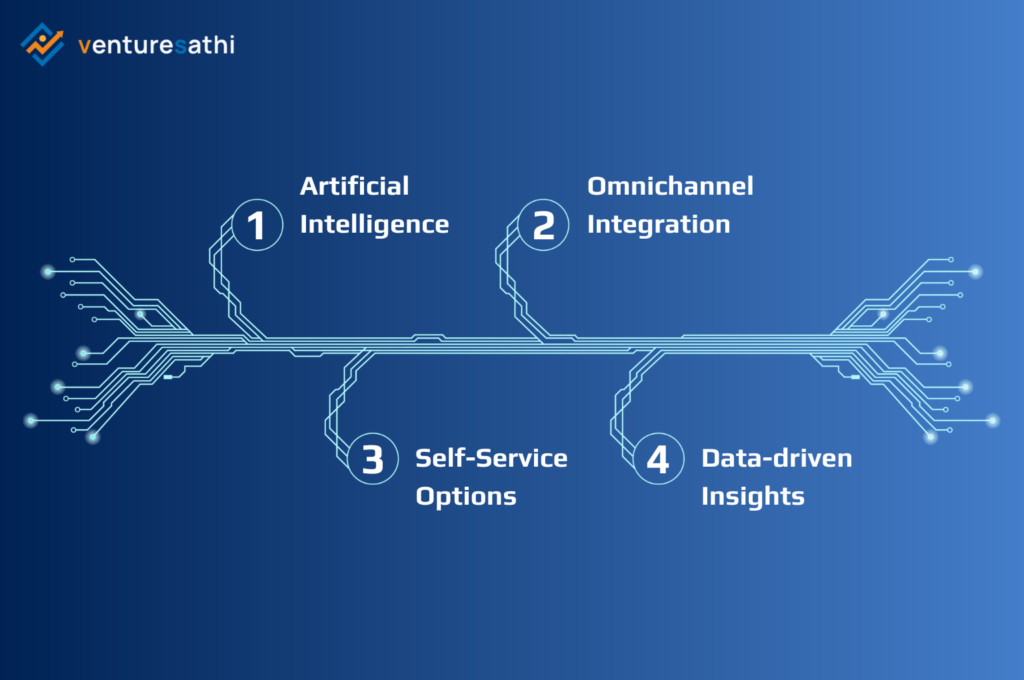
How H1B Visa is Affecting Outsourcing Companies 2025: Everything You Need to Know
If you work in the BPO sector or run an IT services company, September 19, 2025, might go down as one of the most disruptive days in recent memory. President Trump’s new H-1B policy isn’t just another regulation, it’s a fundamental shift that’s forcing the entire industry to rethink how they operate in the US market.
Table Of Contents
- How H1B Visa is Affecting Outsourcing Companies 2025: Everything You Need to Know
- What is H-1B visa?
- How much does H-1B visa cost now?
- Why are Indian BPOs affected by H-1B changes?
- Who are the top H-1B sponsors in 2025?
- How does the new fee affect BPO business model?
- How are BPO companies adapting to H-1B changes?
- What happens if H-1B employee loses job?
- Can H-1B dependents stay in the US?
- What are the new H-1B interview requirements?
- What does this mean for BPO companies future?
- The Bottom Line for BPOs
What is H-1B visa?
The H-1B visa is how BPO and IT services companies have traditionally sent skilled workers to the US for client projects. It’s designed for specialized roles requiring at least a bachelor’s degree think software developers, system analysts, project managers. You get it for three years initially, can extend once, but six years is the absolute maximum.
How much does H-1B visa cost now?
Here’s the situation: starting September 21, 2025, every single new H-1B application requires a $100,000 upfront payment. To put that in perspective, the entire process used to cost between $900 and $5,000.
For BPO companies that built their business models around sending teams of engineers to work on-site with US clients, this is devastating. Imagine you’re staffing a project that needs 20 H-1B workers. That’s suddenly $2 million in visa fees alone before you even talk about salaries, benefits, or project costs.
The initial confusion made things worse. Commerce Secretary Howard Lutnick’s comments suggested this might be an annual recurring fee, which would’ve been a complete death sentence for the traditional BPO model. The White House clarified later—it’s one-time, only for new applications, and doesn’t affect current visa holders or renewals. But that $100,000 per person? That’s real and it’s staying.
Trump’s defense is that the current system is a “national security threat” and that companies have been abusing it to undercut American workers. Whether you agree or not, the impact on BPOs is undeniable.
For BPO companies that built their business models around sending teams of engineers to work on-site with US clients, this is devastating. Imagine you’re staffing a project that needs 20 H-1B workers. That’s suddenly $2 million in visa fees alone before you even talk about salaries, benefits, or project costs.
The initial confusion made things worse. Commerce Secretary Howard Lutnick’s comments suggested this might be an annual recurring fee, which would’ve been a complete death sentence for the traditional BPO model. The White House clarified later—it’s one-time, only for new applications, and doesn’t affect current visa holders or renewals. But that $100,000 per person? That’s real and it’s staying.
Trump’s defense is that the current system is a “national security threat” and that companies have been abusing it to undercut American workers. Whether you agree or not, the impact on BPOs is undeniable.
Why are Indian BPOs affected by H-1B changes?
Let’s be honest—Indian IT services companies have been the backbone of the H-1B program. In 2014, a staggering 86% of H-1B visas went to Indian IT professionals. The entire offshore-onsite model that companies like TCS, Infosys, Wipro, and HCL built their empires on depended heavily on this.
But the writing’s been on the wall for a while. By 2024, Indian-origin work visas dropped to just 19% of H-1B approvals during the April-September window. That’s a massive decline, and it wasn’t an accident—it was the result of sustained pressure to hire locally.
The big players saw it coming and adapted. HCLTech now says 75% of their 23,000 US employees are local hires. Wipro’s H-1B approvals have dropped nearly 70%. These companies fundamentally restructured their US operations because they had to.
Still, Indians represent over 70% of the 730,000 current H-1B holders, with another 500,000 family members on dependent H-4 visas. That’s a huge population suddenly dealing with uncertainty about what comes next.
But the writing’s been on the wall for a while. By 2024, Indian-origin work visas dropped to just 19% of H-1B approvals during the April-September window. That’s a massive decline, and it wasn’t an accident—it was the result of sustained pressure to hire locally.
The big players saw it coming and adapted. HCLTech now says 75% of their 23,000 US employees are local hires. Wipro’s H-1B approvals have dropped nearly 70%. These companies fundamentally restructured their US operations because they had to.
Still, Indians represent over 70% of the 730,000 current H-1B holders, with another 500,000 family members on dependent H-4 visas. That’s a huge population suddenly dealing with uncertainty about what comes next.
Who are the top H-1B sponsors in 2025?
The 2025 numbers tell an interesting story. Amazon topped the list with 10,044 H-1B approvals they’re hiring directly, not through a BPO. Right behind them was TCS with 5,505 approvals, the only services company in the top two.
The rest of the list includes tech giants like Microsoft, Meta, Apple, and Google, plus consulting firms like Deloitte and other Indian majors like Infosys, Wipro, and Tech Mahindra Americas. Notice the pattern? Product companies and consulting firms are getting approvals. Traditional BPOs are struggling.
The rest of the list includes tech giants like Microsoft, Meta, Apple, and Google, plus consulting firms like Deloitte and other Indian majors like Infosys, Wipro, and Tech Mahindra Americas. Notice the pattern? Product companies and consulting firms are getting approvals. Traditional BPOs are struggling.
How does the new fee affect BPO business model?
Here’s what the traditional model looked like: identify client needs, submit multiple H-1B applications in the April lottery, hope enough get selected, deploy those workers on-site, bill hourly rates that made sense because your costs were manageable.
Now? That $100,000 fee per person changes everything. Let’s say you need to staff 50 positions but only expect 30-40% lottery success (which is typical). You might need to submit 125+ applications to ensure you get 50 approvals. That’s $12.5 million at risk before you know if you’ll even get the workers.
Smaller BPO firms simply can’t afford this. Mid-sized companies are going to struggle. Even the giants are rethinking whether the onsite model makes financial sense anymore.
Now? That $100,000 fee per person changes everything. Let’s say you need to staff 50 positions but only expect 30-40% lottery success (which is typical). You might need to submit 125+ applications to ensure you get 50 approvals. That’s $12.5 million at risk before you know if you’ll even get the workers.
Smaller BPO firms simply can’t afford this. Mid-sized companies are going to struggle. Even the giants are rethinking whether the onsite model makes financial sense anymore.
How are BPO companies adapting to H-1B changes?
Smart BPOs saw this coming and started adapting years ago. The playbook has been:
- Hire locally in the US – Build teams of American workers and green card holders
Acquire US companies – Buy firms with existing local workforces
Shift to remote delivery – Keep more work offshore with limited onsite presence
Focus on higher-value roles – If you’re paying $100,000 just for the visa, that worker better be billing premium rates
Companies that stuck with the old “send armies of developers to client sites” model are now facing an existential crisis.
What happens if H-1B employee loses job?
Here’s another nightmare scenario for BPOs: you pay $100,000 for an H-1B, get approval, bring the worker over, and three months later the client cancels the project or the employee quits.
Under H-1B rules, if employment ends, the worker has just 60 days to either find a new sponsor, switch visa status, or leave the country. For the BPO, that’s $100,000 down the drain plus the cost of flying someone back home. The risk calculation just became terrifying.
Under H-1B rules, if employment ends, the worker has just 60 days to either find a new sponsor, switch visa status, or leave the country. For the BPO, that’s $100,000 down the drain plus the cost of flying someone back home. The risk calculation just became terrifying.
Can H-1B dependents stay in the US?
BPO companies often used the H-1B as a retention and recruiting tool. “Work on exciting US projects, bring your family, kids can go to American schools.” That pitch is harder to make now.
Spouses and kids under 21 can still get H-4 dependent visas, but the controversial executive order removing birthright citizenship for their children (currently being challenged by 18 states) adds another layer of uncertainty. Are top engineers going to accept a $100,000 gamble for a visa that might not even secure their children’s future?
Spouses and kids under 21 can still get H-4 dependent visas, but the controversial executive order removing birthright citizenship for their children (currently being challenged by 18 states) adds another layer of uncertainty. Are top engineers going to accept a $100,000 gamble for a visa that might not even secure their children’s future?
What are the new H-1B interview requirements?
As if the fee wasn’t enough, the State Department announced in September that visa interviews must now happen in your home country or legal residence. Applying elsewhere means proving legal residence, longer waits, and non-refundable fees.
For BPO companies coordinating dozens or hundreds of visa applications, this adds logistical complexity and unpredictability to an already challenging process.
For BPO companies coordinating dozens or hundreds of visa applications, this adds logistical complexity and unpredictability to an already challenging process.
What does this mean for BPO companies future?
Let’s be blunt: the traditional BPO staffing model is dying, and this $100,000 fee might be the final nail in the coffin. The industry is splitting into two groups:
Companies that will survive: These are BPOs that saw this coming and already made changes. They’ve hired lots of local American workers, bought US companies to get existing teams, and moved most work to remote delivery instead of sending everyone onsite. Think of the big players like TCS, Infosys, and HCL who’ve been doing this for years. They’ll make it through, even if profits are lower.
Companies in serious trouble: These are the smaller BPOs and anyone still relying heavily on sending H-1B workers to client sites. They don’t have the money to pay $100,000 per person or the resources to completely change how they operate. Many of these companies won’t survive. We’re going to see a lot of them shut down or get bought out by bigger firms.
Here’s the ironic part: the big Indian IT companies that everyone thought would be hurt the most? They’re actually in the best position because they started preparing for this years ago. It’s the mid-sized BPOs that are facing the biggest crisis.
Companies that will survive: These are BPOs that saw this coming and already made changes. They’ve hired lots of local American workers, bought US companies to get existing teams, and moved most work to remote delivery instead of sending everyone onsite. Think of the big players like TCS, Infosys, and HCL who’ve been doing this for years. They’ll make it through, even if profits are lower.
Companies in serious trouble: These are the smaller BPOs and anyone still relying heavily on sending H-1B workers to client sites. They don’t have the money to pay $100,000 per person or the resources to completely change how they operate. Many of these companies won’t survive. We’re going to see a lot of them shut down or get bought out by bigger firms.
Here’s the ironic part: the big Indian IT companies that everyone thought would be hurt the most? They’re actually in the best position because they started preparing for this years ago. It’s the mid-sized BPOs that are facing the biggest crisis.
The Bottom Line for BPOs
The H-1B program that helped build the global IT services industry as we know it is fundamentally changing. That $100,000 fee isn’t just a cost increase—it’s a signal that the US wants a different kind of workforce model.
BPO companies that haven’t already started building local capabilities, rethinking their delivery models, and moving away from H-1B dependency are facing a very difficult few years ahead. The ones that saw this coming and adapted? They’ll capture the market share left behind by those who couldn’t evolve fast enough.
The question isn’t whether the industry will change. It’s whether your company will be one of the survivors.
BPO companies that haven’t already started building local capabilities, rethinking their delivery models, and moving away from H-1B dependency are facing a very difficult few years ahead. The ones that saw this coming and adapted? They’ll capture the market share left behind by those who couldn’t evolve fast enough.
The question isn’t whether the industry will change. It’s whether your company will be one of the survivors.








